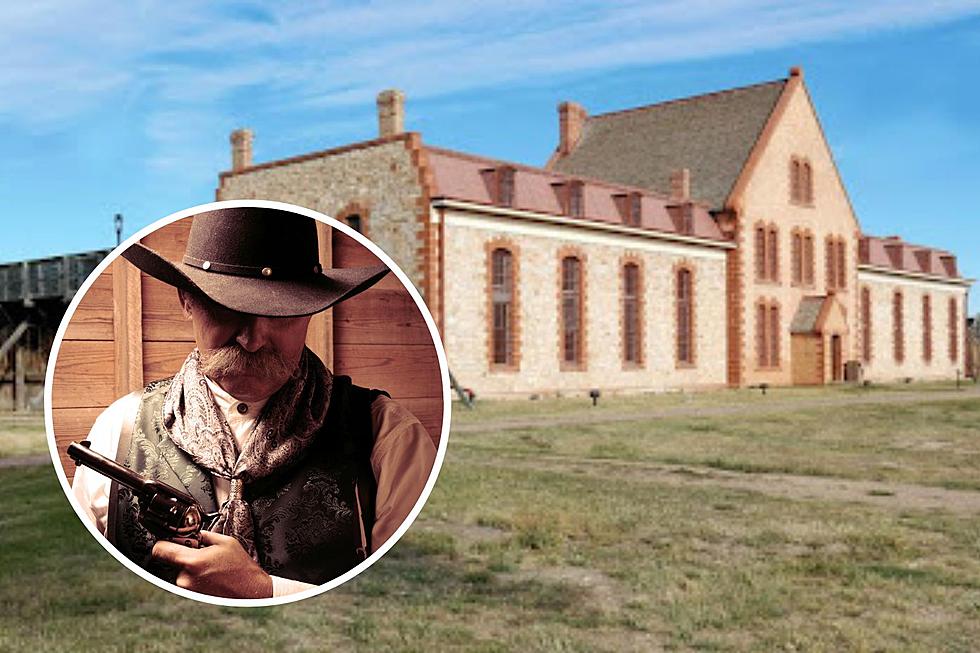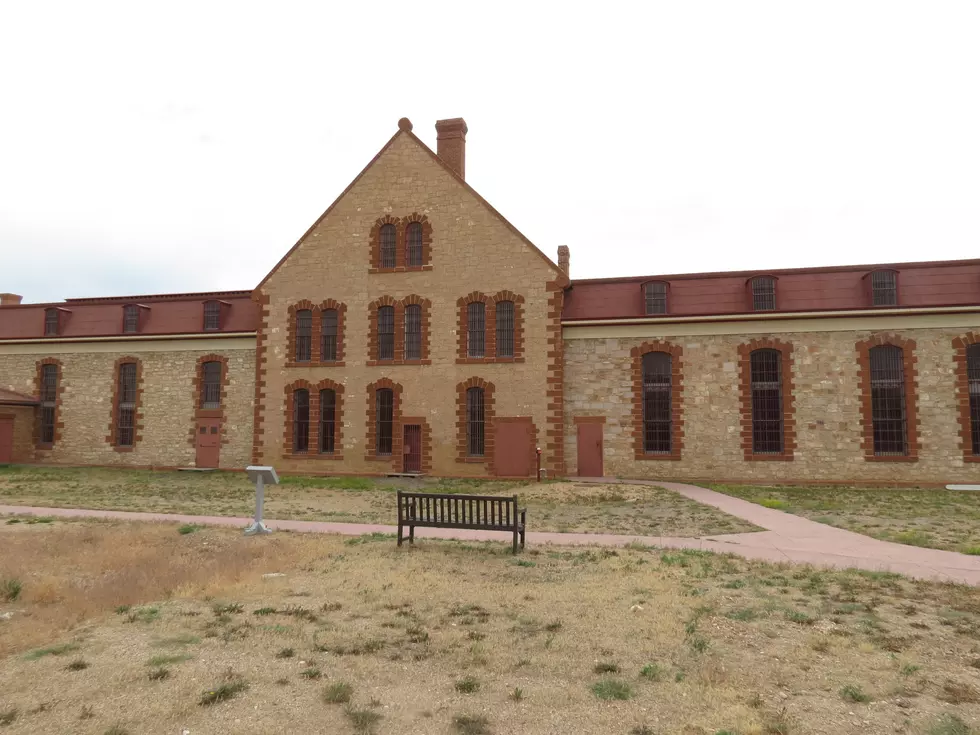
What made Laramie Wyoming a Western Icon – Our Top 5
Thanks to the magic of the movies, television and books, the name Laramie, Wyoming conjures up visions of the Old West like few others. We got our name from a lost French-Canadian Fur Trapper, had outlaws like Butch Cassidy stay at the Wyoming Territorial Prison, we had Thomas Edison give us a nickname, a TV show and a movie called "The Man from Laramie". All this and a lot more made the town of Laramie popular in western lore. Early town history- Laramie was founded in the mid-1860s as a tent city near the Overland Stage Line route and the Union Pacific portion of the first transcontinental railroad. By May 10, 1868, when the first train entered town, entrepreneurs were building more permanent structures, and Laramie soon had stores, houses, a school, and churches. Laramie suffered initially from lawlessness. Its first mayor, M.C. Brown, resigned after three turbulent weeks in mid-1868, saying that the town was "ungovernable." This was much due to threats he received from three half-brothers, early Old West gunman "Big" Steve Long, Con Moyer and Ace Moyer. Long was Laramie's first marshal, and with his brothers owned the saloon Bucket of Blood. (Parking lot behind Altitudes) The three began harassing settlers, forcing them to sign over the deeds to their property to them. Any who refused were killed, usually goaded into a gunfight by Long. By October 1868, Long had killed 13 men. However, the first Albany County sheriff, rancher N. K. Boswell, organized a "Vigilance Committee", and on October 28, 1868, Boswell led the committee into the Bucket of Blood, overwhelmed the three brothers, and lynched them at an unfinished cabin down the street. Through a series of other lynching and other forms of intimidation, the vigilantes reduced the "unruly element" and established a semblance of law and order.
- The Man from Laramie
The Man from Laramie 1The Man From Laramie
Click to watch TrailerThe Man from Laramie (1955) is an American Technicolor Western film directed by Anthony Mann and starring James Stewart in the fifth and final of their Western collaborations, and their seventh collaboration overall. It was adapted from a story of the same title by Thomas T. Flynn first published in The Saturday Evening Post in 1954, and thereafter as a novel by publisher Ward Lock in 1955. It was one of the first Westerns to be shot in CinemaScope to capture the vastness of the scenery.
- Laramie TV Show
Laramie TV Show 2Laramie TV Show
Click to view TV ShowLaramie the 1950’s-1960’s TV Show Upon its switch to regular color broadcasts, this was one of the first series to inaugurate the new NBC Peacock logo of 1962- a kaleidoscope of concentric color circles with the text, "the following program is brought to you in living color..." The exterior sets of the old western town of Laramie in this series were not on the Warner Bros. back lot; they were filmed on the Universal Studios Western Street as Revue studios were located at Universal International Studios. Warner Bros. Laramie Street was used in the "Lawman" TV Series and for many years after it was also used in countless Warner Bros. motion picture and television projects. since the end of the "Laramie" television series. It had also been continuously rented out for filming to several non-Warner Bros. productions such as Little House on the Prairie, among others. Known throughout the studio as "Laramie Street," it consisted of three streets of old western buildings and it was the last of two separate western sets to remain standing on the Warner Bros. lot. Another western street, which existed in the central portion of the studio's back lot, was demolished in the mid-'80s. Laramie Street remained in existence until 2000, when it was demolished to make way for a collection of modern-day exterior set houses.
- Butch Cassidy
Butch Cassidy 3Butch Cassidy
Click to see Butch Cassidy, making history todayRobert Leroy Parker, Butch Cassidy, 1893, Wyoming State Penitentiary Photo, Laramie Robert Leroy Parker (1866-1908?) was the son of devout Mormons. Parker was led into the life of crime by Mike Cassidy, from whom he adopted the name "George Cassidy." One explanation sometime given for the name change is that he did not wish to bring shame on his family. Mike Cassidy was involved in rustling, but he ultimately disappeared after killing a Wyoming rancher. In 1885, Parker was employed by Charlie Crouse. Crouse operated a ranch in Brown's Hole and a butcher shop in Rock Springs in which it is alleged that he sold meat from rustled cattle. From this employment, it is contended that Parker derived the nickname "Butch." By 1886, Parker was living near Meeteetse under his real name. It is believed that he participated in the robbery of the San Miquel Valley Bank in Telluride on June 24, 1889. The Telluride robbery saw the introduction of a new tactic used by members of the Wild Bunch in subsequent robberies. Along the escape route, the robbers would station fresh horses. As they made good their escape they would switch the tired horses for the fresh ones. The pursuing posse would, however, have to continue their chase on tired horses. Thus, the robbers would be able to elude capture. Nevertheless, one member of Sheriff Baty's posse almost caught up with the Telluride robbers, but then found himself in the urgent need to stop and relieve himself, permitting the robbers to escape. Parker continued to engage in rustling in Wyoming. At the instance of Otto Franc, owner of the Pitchfork near Meeteetse, he was arrested for horse stealing and sentenced in 1894 to the State Penitentiary, then in Laramie. He was released six months early in January 1896. He then returned to a life of crime using a series of hideouts including Robbers' Roost in southern Utah, Brown's Hole in northwest Colorado, and the Hole in the Wall.
- Thomas Edison
Thomas Edison 4Thomas Edison
Inspired while fly-fishing in the Wyoming area, Thomas Edison came up with his idea of the filament light bulb. Home to the first electrical plant in the Rocky Mountains, Laramie lit up the night sky like a gem, earning the nick name, “Gem City of the Plains”
- Paul Taylor - As Jacques LaRamie
Paul Taylor - As Jacques LaRamie 5Jacques LaRamie
Laramie takes its name from Jacques LaRamie, a French or French-Canadian trapper who disappeared in the Laramie Mountains in the late 1810s and was never heard from again. He was one of the first Europeans to visit the area, and his name was given to a river, mountain range, peak, US Army fort, county, and city. More Wyoming landmarks are named for him than any other trapper but Jim Bridger. Note: Paul Taylor of Laramie and Bobby Bridger (great grand son of Jim Bridger) are good friends today.
More From Laramie Live









